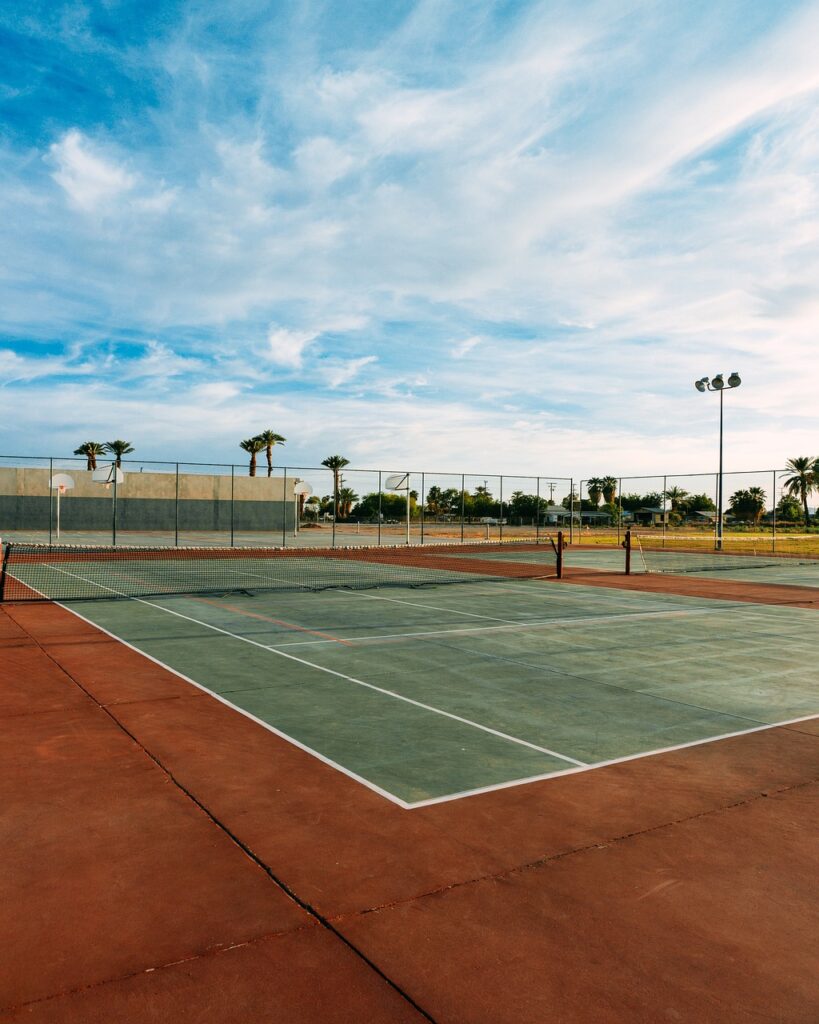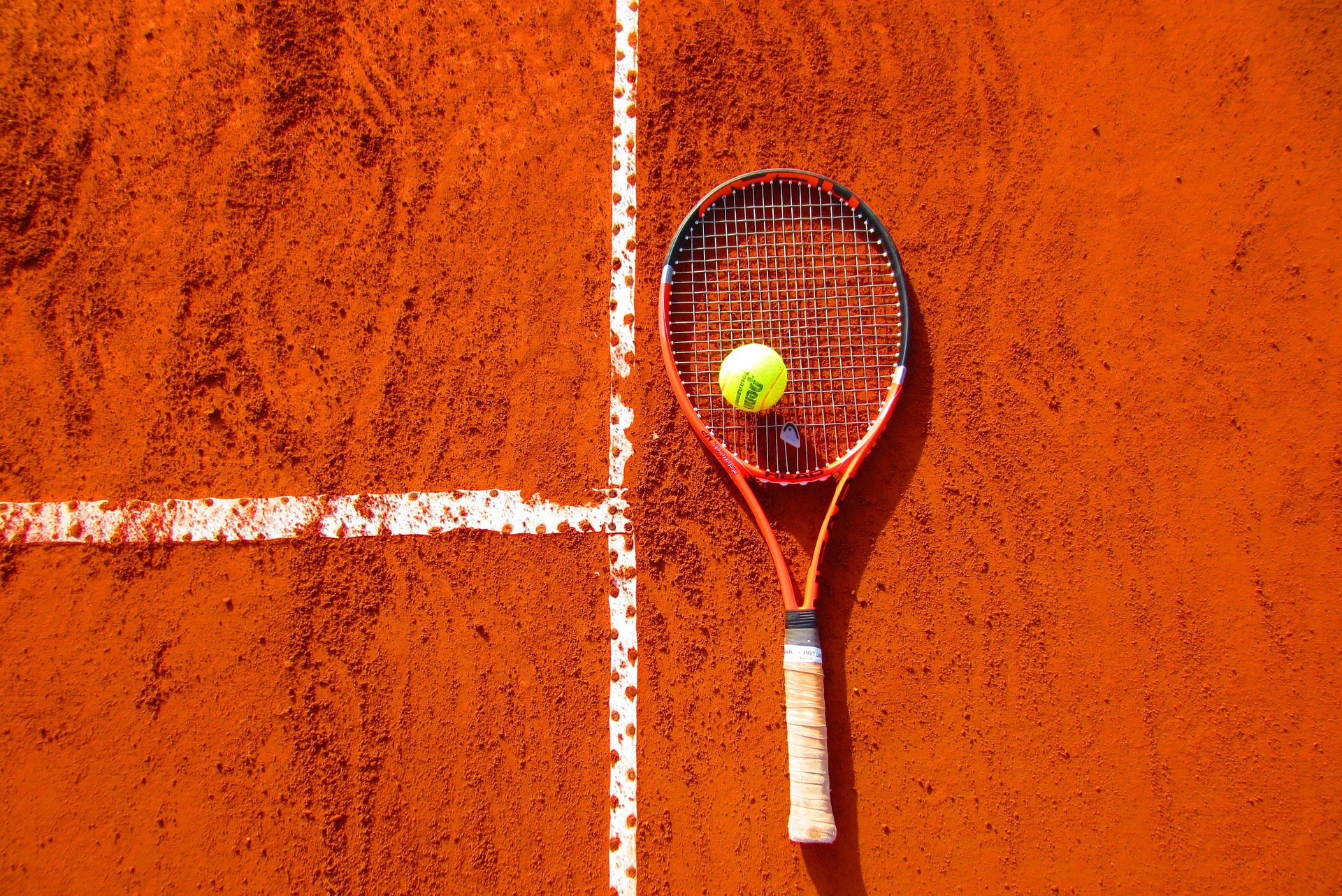Tennis court surfaces play a crucial role in your performance. While many beginners focus on the game, strokes, and strategy, they often overlook the surface they’re playing on. The type of court—whether grass, clay, or hard—can significantly impact how you play. Understanding the differences between these surfaces is essential for adapting your game and improving your skills. In this blog post, we’ll explore how each surface affects play and provide tips to help you adjust your style accordingly.
1. Grass Courts: The Fast and Slippery Surface
Grass courts, most famously used at Wimbledon, are known for their speed and low bounce. This surface consists of natural grass, which can be difficult to maintain and results in a fast-paced game where the ball slides rather than bounces high.
How It Affects Play:
- Fast Play: Grass courts have the fastest ball speed of all surfaces due to the low friction between the ball and the surface.
- Low Bounces: The ball bounces lower on grass compared to other surfaces, which can force players to get lower to the ground and react quickly.
- Unpredictable Bounce: Because of the nature of grass, the bounce can be inconsistent, making it harder to anticipate the ball’s trajectory.
How to Play on Grass Courts:
- Stay Low: Since the ball bounces lower, it’s essential to bend your knees and stay low to meet the ball.
- Focus on Serve and Volley: Grass favors aggressive play, particularly serving and volleying. Strong serves can be difficult to return, and quick movements to the net can pay off.
- Shorter Rallies: The fast pace of grass typically results in shorter rallies, so focus on finishing points quickly rather than engaging in long exchanges.
2. Clay Courts: The Slow and Strategic Surface
Clay courts, seen at the French Open, are made of crushed brick or shale, creating a much slower surface compared to grass or hard courts. The ball bounces higher and slower, and the surface allows players to slide into their shots.
How It Affects Play:
- Slower Pace: Clay slows down the ball, making it harder for players to hit winners and encouraging longer rallies.
- High Bounce: The ball bounces higher on clay, which benefits players who use topspin in their shots.
- Sliding: Players can slide into their shots due to the loose surface, which can be both an advantage and a challenge for those unfamiliar with the movement.
How to Play on Clay Courts:
- Use Topspin: Clay courts reward heavy topspin, as the high bounce keeps the ball deep in your opponent’s court.
- Patience and Stamina: Be prepared for longer rallies. Patience is key, and focusing on consistency will give you the edge over time.
- Perfect Your Footwork: Sliding is a common tactic on clay. Practice sliding into shots to maintain balance and control.

3. Hard Courts: The Balanced All-Rounder
Hard courts are the most common surface, used in the US Open and Australian Open. They are made of asphalt or concrete with a layer of acrylic, providing a medium-fast pace with a relatively predictable bounce.
How It Affects Play:
- Medium Speed: Hard courts offer a balanced pace, faster than clay but slower than grass.
- Consistent Bounce: The surface offers a consistent and predictable bounce, making it easier to time your shots compared to grass or clay.
- Wear and Tear: Hard courts can be tough on the body, especially the knees, due to their harder, unforgiving nature.
How to Play on Hard Courts:
- Balanced Game: Because hard courts don’t favor a specific style, it’s important to have a well-rounded game. Mix up your groundstrokes, serves, and net play.
- Footwork and Speed: The medium pace of hard courts allows for more time to react, so prioritize strong footwork to cover the court efficiently.
- Vary Your Shots: Since hard courts don’t heavily favor any one type of shot, variety is key. Mix in slices, flat shots, and topspin to keep your opponent guessing.
Which Court is Right for You?
As a beginner, it’s important to try out different surfaces to see which one suits your playing style. If you prefer fast-paced games with short rallies, you may enjoy grass courts. For players who love strategy and longer rallies, clay courts offer a great challenge. If you prefer a balanced game, hard courts provide a consistent and accessible option.
Understanding the characteristics of different court surfaces is essential to developing your tennis skills. Each surface offers unique challenges and opportunities to improve your game. By learning how to adjust your style of play based on the surface, you’ll be able to adapt to different conditions and improve your overall performance. So the next time you hit the court, pay attention to what’s under your feet – it could make all the difference in your game!
